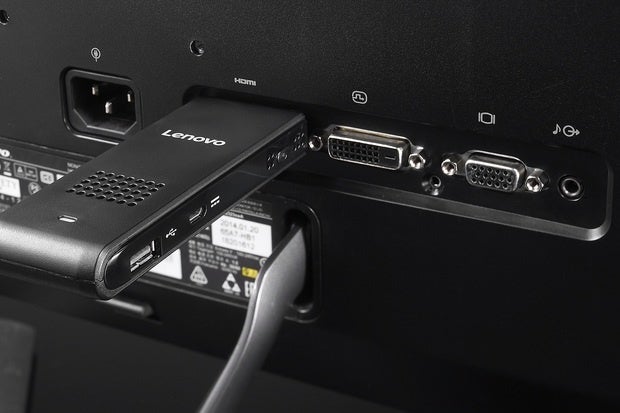Why PCs-on-a-stick are a really bad idea || Source: computerworld ||||

They are too easy to lose, just like every thumbdrive I've ever owned
Computers are getting smaller and smaller, but what I really want them to do is disappear entirely. I’d be happy if the “computer” as we know it was just a voice command away, something so ubiquitous and useful, we never had to think about charge cables, processor speeds or upgrading to the latest 4K monitor. They would just "work" all around us, on touchscreens and in the car. I want computing that’s so pervasive and obvious it works more like the electricity in your home or office and “turns on” like a light switch. Basically, computing would become completely invisible.
When Lenovo announced its Ideacentre Stick 300 last week, my first thought was: Oh good, another small gadget I will lose almost immediately. It’s about the size of two index fingers, which is a sign that mobile computing has passed the point of no return.
Granted, I test hundreds of gadgets per year (I’m keeping my local FedEx office in business) and tend to accumulate a lot of tech clutter, but I can honestly say I have never actually kept a USB thumbdrive around for longer than a month or two. They disappear into a drawer, never to be used for my Herculean music collection or those awkward family photos ever again.
The Ideacentre Stick is not exactly priced as a throwaway gadget, either. It’s $129, which is far cheaper than any laptop but still not dirt cheap — it's not a disposable item. On the surface, PC-on-a-stick computers like the Intel Compute are meant for those who travel frequently and can plug into an existing desktop at a remote office, one that has a keyboard, mouse and display available. They offer local storage and, of course, the added security that comes with using your own local device.
But we’re going to lose them. Right away. And a lost gadget is one of the worst security nightmares for any IT department. It’s one thing to get hacked at the airport when you are using a Lenovo laptop you at least carry back with you to San Francisco for a post-mortem. It’s another to misplace an entire computer at the airport and allow a criminal to gain easy access to your company financials when they guess your password or bypass the encryption.
Most importantly, I don’t see the benefits for business travelers. These tiny computers essentially give you access to remote systems over a VPN and let you store information locally and securely, but they are a pain to carry around. They are too easy to lose inside your laptop bag. They lack flexibility because you have to find an open workstation or kiosk at a hotel. They are a perfect example of a trend product because they seem new and novel at first; then you use them and they seem to provide value; and finally, you realize the benefits aren’t worth the hassle.
With apologies to Roku and many other companies, I feel the same way about streaming products meant to help you tap into services like Hulu and Netflix. They are superfluous. Movie streaming works fine on an Xbox One, on the TV itself, or even on a Dish receiver these days. A PC thumbdrive doesn’t make sense because I’m probably going to have a laptop along anyway with an actual keyboard and screen or another way to VPN from a remote office. Companies keep trying to improve on the laptop, but I still see them everywhere at airports. Not too many people are using kiosks.
How long will the trend last? I’m guessing until enough people see their PC-on-a-stick get swallowed up by laptop bag, lost at an airport or eaten by an escalator.

Comments
Post a Comment